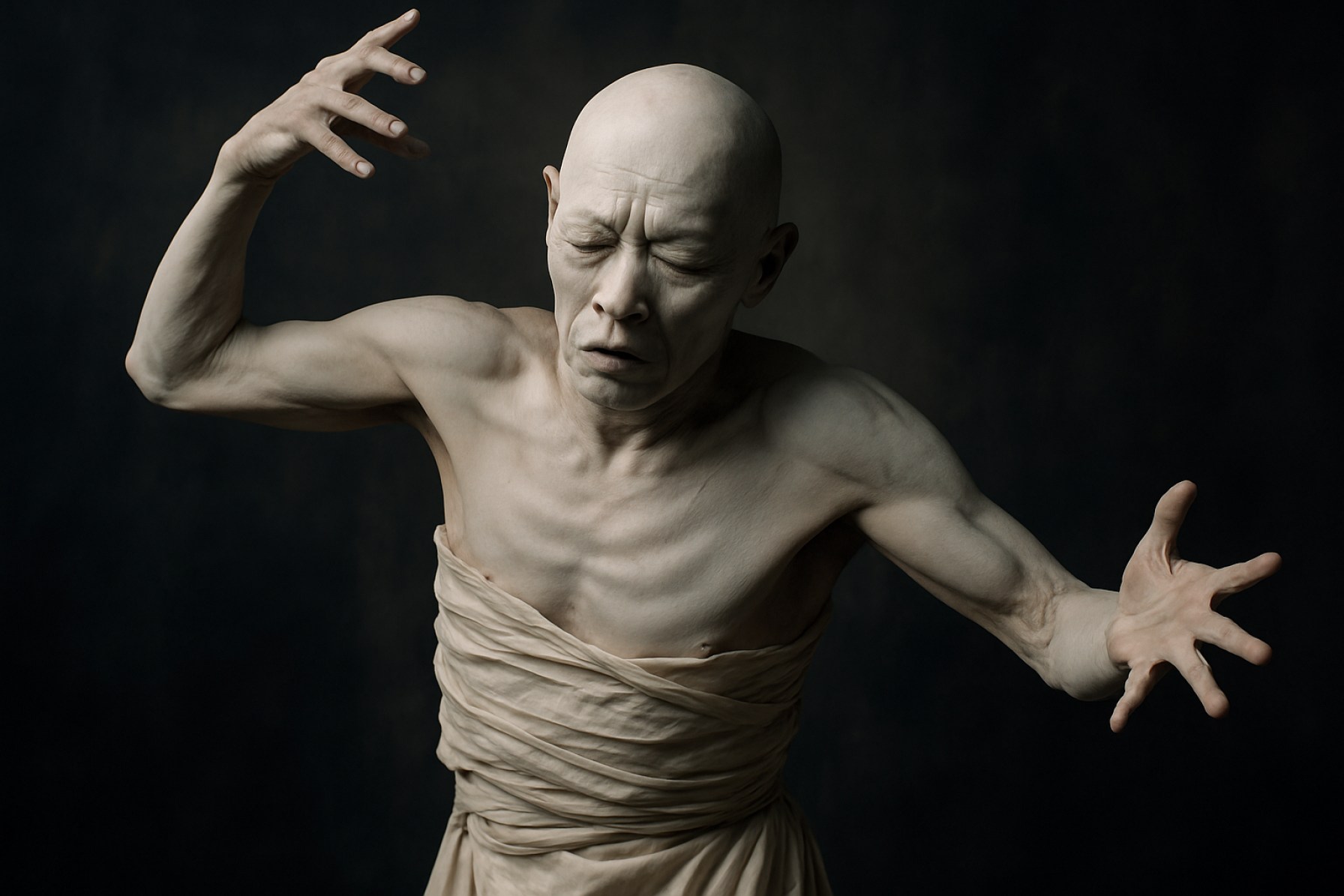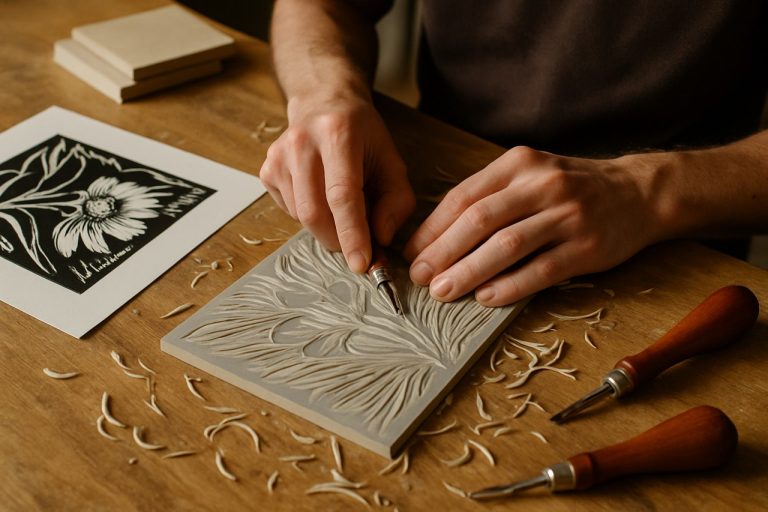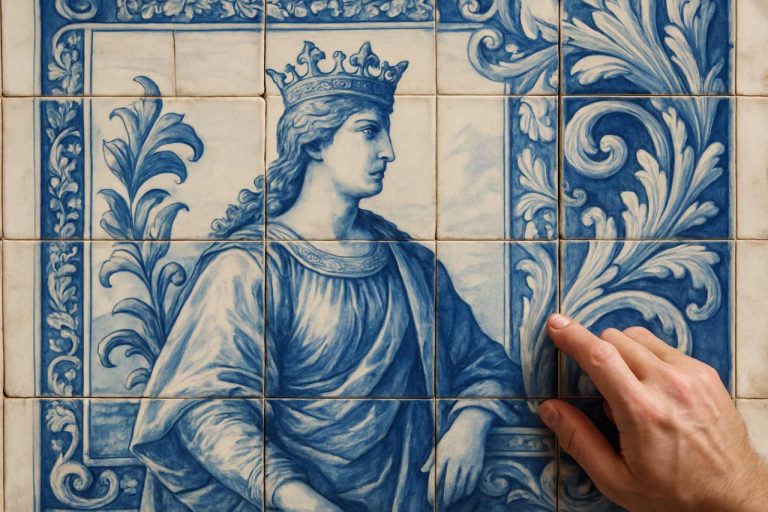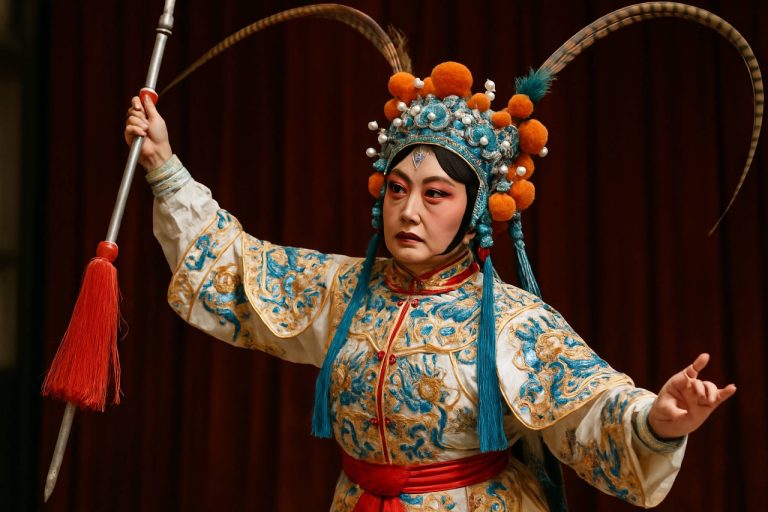
Butoh Dance: The Radical Japanese Art Form That Transformed Modern Performance. Discover Its Origins, Mystique, and Enduring Global Influence. (2025)
- Origins and Historical Context of Butoh
- Key Founders: Tatsumi Hijikata and Kazuo Ohno
- Philosophy and Aesthetics of Butoh
- Signature Techniques and Movement Vocabulary
- Butoh’s Influence on Contemporary Dance and Theater
- Major Troupes and International Festivals
- Butoh in Visual Arts, Film, and Multimedia
- Technology and Innovation in Butoh Performance
- Global Spread and Public Interest Trends (Estimated 15% Growth in International Workshops and Festivals, 2020–2024)
- Future Outlook: Butoh’s Role in 21st Century Performance Art
- Sources & References
Origins and Historical Context of Butoh
Butoh dance, an avant-garde performance art, originated in post-World War II Japan during the late 1950s and early 1960s. Its emergence is closely tied to the social, political, and cultural upheavals that characterized Japan’s rapid modernization and the aftermath of the war. The devastation of Hiroshima and Nagasaki, the American occupation, and the subsequent transformation of Japanese society created a fertile ground for new artistic expressions that questioned traditional values and sought to address the trauma and existential uncertainty of the era.
The term “Butoh” (舞踏) translates roughly as “dance step” or “dance of darkness.” It was first used by Tatsumi Hijikata and Kazuo Ohno, the two principal founders of the form. Hijikata, often regarded as the intellectual architect of Butoh, was inspired by a wide range of influences, including German Expressionist dance, French Surrealism, and traditional Japanese performing arts such as Noh and Kabuki. His 1959 work “Kinjiki” (Forbidden Colors), based on a novel by Yukio Mishima, is widely considered the inaugural Butoh performance. This piece shocked audiences with its taboo themes and radical departure from established dance conventions, setting the tone for Butoh’s reputation as a provocative and boundary-pushing art form.
Kazuo Ohno, the other central figure, brought a deeply personal and spiritual dimension to Butoh. His performances often explored themes of memory, aging, and the human condition, drawing on his experiences as a soldier and his Christian faith. Together, Hijikata and Ohno developed Butoh as a form that resists easy categorization, blending elements of improvisation, grotesque imagery, and slow, controlled movements. The dance often features white body paint, contorted postures, and an emphasis on exploring the subconscious and the body’s relationship to space and time.
Butoh’s historical context is inseparable from the broader currents of Japanese and global avant-garde movements. It emerged alongside other experimental art forms that sought to break down the boundaries between performer and audience, art and life. Over the decades, Butoh has evolved into a global phenomenon, with practitioners and festivals worldwide. Its legacy is maintained by organizations such as the Japan Foundation, which supports the international dissemination of Japanese culture, including Butoh, and by numerous independent troupes and artists who continue to reinterpret its principles for new generations.
Key Founders: Tatsumi Hijikata and Kazuo Ohno
Butoh dance, an avant-garde performance art that emerged in postwar Japan, is inextricably linked to its two principal founders: Tatsumi Hijikata and Kazuo Ohno. Their collaboration and individual contributions in the late 1950s and 1960s established the philosophical and aesthetic foundations of Butoh, shaping its evolution into a globally recognized art form.
Tatsumi Hijikata (1928–1986) is widely regarded as the originator of Butoh. Born in Akita Prefecture, Hijikata was influenced by the social upheaval and trauma of postwar Japan. He sought to create a new form of expression that broke away from both Western modern dance and traditional Japanese dance. In 1959, Hijikata premiered “Kinjiki” (“Forbidden Colors”), a controversial performance inspired by Yukio Mishima’s novel, which is often cited as the first Butoh piece. His choreography was characterized by slow, controlled movements, grotesque imagery, and a focus on the subconscious and taboo subjects. Hijikata’s theoretical writings and workshops further codified Butoh’s principles, emphasizing transformation, the body’s relationship to darkness, and the liberation from conventional aesthetics.
Kazuo Ohno (1906–2010), a contemporary and collaborator of Hijikata, brought a contrasting sensibility to Butoh. Trained in modern dance and influenced by Christian spirituality, Ohno’s performances were noted for their lyricism, emotional depth, and spiritual resonance. His most famous work, “Admiring La Argentina,” was a tribute to the Spanish dancer Antonia Mercé and exemplified his ability to channel memory and emotion through movement. Ohno’s longevity and international tours helped introduce Butoh to audiences worldwide, and his teaching inspired generations of dancers.
Together, Hijikata and Ohno established the core tenets of Butoh: a rejection of fixed forms, an embrace of transformation, and a willingness to confront the extremes of human experience. Their partnership was both collaborative and complementary—Hijikata’s dark, visceral explorations balanced by Ohno’s poetic, introspective approach. The legacy of both artists is preserved through the ongoing work of the Kazuo Ohno Dance Studio, which continues to promote Butoh’s philosophy and practice.
- Tatsumi Hijikata: Founder, theorist, and choreographer; established Butoh’s foundational concepts and aesthetics.
- Kazuo Ohno: Co-founder, performer, and teacher; expanded Butoh’s expressive range and international reach.
The enduring influence of Hijikata and Ohno is evident in the global proliferation of Butoh companies and festivals, as well as in the continued scholarly and artistic exploration of their work by organizations such as the Japan Foundation, which supports the dissemination of Japanese performing arts worldwide.
Philosophy and Aesthetics of Butoh
Butoh dance, originating in post-war Japan, is deeply rooted in a unique philosophy and aesthetic that distinguishes it from other contemporary dance forms. Developed in the late 1950s by Tatsumi Hijikata and Kazuo Ohno, Butoh emerged as a reaction to both Western influences and traditional Japanese performance arts. Its philosophy is often described as an exploration of the subconscious, the grotesque, and the primal aspects of human existence. Rather than focusing on technical virtuosity or narrative clarity, Butoh seeks to express the ineffable—emotions, memories, and states of being that are often left unspoken or unseen.
Central to the philosophy of Butoh is the concept of “ankoku butoh,” or “dance of darkness.” This does not merely refer to darkness as negativity, but rather as a space of potential, transformation, and deep introspection. Dancers often engage in slow, controlled movements, sometimes contorting their bodies or adopting unconventional postures to evoke a sense of vulnerability and rawness. The aesthetic is intentionally minimalist, with performers frequently using white body paint, simple costumes, and sparse staging. This stripped-down approach allows for a heightened focus on the internal experience of the dancer and the subtle nuances of movement.
Butoh’s aesthetic is also characterized by its embrace of ambiguity and contradiction. Movements can be both beautiful and unsettling, graceful and grotesque. The dance often incorporates elements of improvisation, allowing performers to respond to their own sensations and the environment in real time. This openness is reflective of Butoh’s philosophical underpinnings, which reject rigid definitions of beauty, identity, and even the boundaries between life and death. Instead, Butoh invites both performers and audiences to confront the full spectrum of human experience, including suffering, ecstasy, and transformation.
The influence of Zen Buddhism and Japanese aesthetics such as “wabi-sabi” (the beauty of imperfection and impermanence) is evident in Butoh’s approach. The dance form encourages a meditative state, both for the dancer and the observer, fostering a sense of presence and acceptance of the moment. Butoh has been recognized and supported by cultural organizations such as the Japan Foundation, which promotes Japanese arts and culture globally. Today, Butoh continues to evolve, inspiring artists worldwide and serving as a powerful medium for exploring the depths of human consciousness and the complexities of existence.
Signature Techniques and Movement Vocabulary
Butoh dance, originating in post-war Japan, is renowned for its distinctive movement vocabulary and signature techniques that set it apart from other contemporary dance forms. At its core, Butoh emphasizes the exploration of the body’s physical and psychological limits, often manifesting in slow, controlled, and sometimes grotesque movements. The dance form rejects conventional aesthetics, instead embracing transformation, metamorphosis, and the expression of primal emotions.
One of the most recognizable techniques in Butoh is the use of slow motion. Dancers frequently move at an almost imperceptible pace, heightening the audience’s awareness of each gesture and the internal state of the performer. This deliberate slowness is not merely stylistic; it is intended to deepen the dancer’s connection to their own body and to the space around them. Another hallmark is the white body—dancers often cover themselves in white body paint, which serves to erase individual identity and create a blank canvas for transformation.
Butoh’s movement vocabulary is also characterized by distorted postures and unconventional use of the body. Dancers may contort their limbs, crawl, tremble, or move in ways that evoke images of suffering, ecstasy, or metamorphosis. These movements are often inspired by natural phenomena, animals, or the subconscious mind, reflecting Butoh’s roots in both Japanese tradition and avant-garde experimentation. The dance frequently incorporates improvisation, allowing performers to respond to internal impulses or external stimuli in real time.
Breath and facial expression play a crucial role in Butoh. Dancers use exaggerated facial expressions—grimaces, wide eyes, or slack jaws—to convey intense emotional states. Breathing is often audible and synchronized with movement, further emphasizing the visceral nature of the performance. Silence and stillness are as important as movement, with pauses and moments of immobility serving to heighten dramatic tension.
Butoh’s signature techniques have been codified and transmitted by leading practitioners and organizations, such as the New National Theatre, Tokyo, which supports the preservation and evolution of Japanese performing arts. Internationally, Butoh is recognized for its unique contribution to contemporary dance, with workshops and performances held by dedicated troupes and cultural institutions worldwide. The form’s adaptability and emphasis on personal expression ensure that its movement vocabulary continues to evolve, reflecting both its Japanese origins and its global resonance.
Butoh’s Influence on Contemporary Dance and Theater
Butoh, an avant-garde dance form that originated in post-war Japan, has exerted a profound influence on contemporary dance and theater worldwide. Emerging in the late 1950s through the pioneering work of Tatsumi Hijikata and Kazuo Ohno, Butoh was conceived as a radical response to both Western dance traditions and the cultural trauma of modern Japan. Characterized by its slow, controlled movements, stark imagery, and exploration of taboo subjects, Butoh challenges conventional aesthetics and narrative structures in performance art.
The impact of Butoh on contemporary dance is evident in its emphasis on the body as a site of transformation and expression. Unlike classical ballet or modern dance, which often prioritize technical virtuosity and codified movement, Butoh encourages dancers to explore the depths of human emotion, physical limitation, and psychological states. This approach has inspired choreographers and performers globally to reconsider the possibilities of movement and embodiment. Notably, Butoh’s influence can be seen in the works of European and American dance artists who integrate its principles of improvisation, minimalism, and somatic awareness into their own practices.
In theater, Butoh’s legacy is equally significant. The form’s integration of dance, drama, and visual art has contributed to the development of interdisciplinary performance genres. Theatrical practitioners have adopted Butoh’s methods to create immersive, emotionally charged experiences that blur the boundaries between performer and audience. The use of Butoh-inspired movement and imagery is particularly prevalent in experimental and physical theater, where it serves as a tool for exploring themes of identity, trauma, and transformation.
Internationally, Butoh has been disseminated through festivals, workshops, and collaborations, fostering a global network of practitioners and enthusiasts. Organizations such as the Japan Foundation have played a crucial role in promoting Butoh abroad, supporting performances and educational initiatives that introduce the form to new audiences. Additionally, institutions like the Nippon Foundation contribute to the preservation and evolution of Japanese performing arts, including Butoh, by funding research and cultural exchange programs.
As Butoh continues to evolve in the 21st century, its influence on contemporary dance and theater remains dynamic. The form’s commitment to authenticity, vulnerability, and innovation ensures its relevance for artists seeking to push the boundaries of performance and engage with the complexities of the human condition.
Major Troupes and International Festivals
Butoh dance, since its inception in postwar Japan, has evolved into a global phenomenon, with numerous major troupes and international festivals dedicated to its unique aesthetic. The pioneering troupes, such as Dairakudakan, Sankai Juku, and the original group led by Tatsumi Hijikata, have played a pivotal role in shaping and disseminating Butoh worldwide.
Dairakudakan, founded in 1972 by Akaji Maro, is renowned for its large-scale, visually striking performances and its commitment to the philosophy of “Temputenshiki” (the uniqueness of each person). The troupe is recognized for its innovative choreography and for training many prominent Butoh artists. Sankai Juku, established by Ushio Amagatsu in 1975, is celebrated for its poetic, gravity-defying performances and has been instrumental in introducing Butoh to international audiences through extensive touring and collaborations with major theaters and festivals. Both troupes have contributed significantly to the global recognition of Butoh, maintaining active schedules and educational programs in Japan and abroad.
Other influential groups include Byakko-sha, known for its experimental approach, and Hakutobo, which continues the legacy of Hijikata’s original vision. These troupes, along with independent artists, have fostered a vibrant Butoh community that extends beyond Japan, with practitioners and companies now established in Europe, the Americas, and Australia.
International festivals have been crucial in promoting Butoh’s cross-cultural exchange and artistic development. The International Butoh Festival in Tokyo is a central event, attracting artists and audiences from around the world. In Europe, the eX…it! International Butoh Festival in Germany and the Butoh Festival Paris are prominent platforms for both established and emerging artists. The New York Butoh Institute Festival in the United States showcases a diverse range of Butoh performances, workshops, and discussions, reflecting the genre’s growing influence in North America.
These festivals not only present performances but also offer workshops, lectures, and residencies, fostering dialogue between artists of different backgrounds and disciplines. The internationalization of Butoh is further supported by organizations such as the Japan Foundation, which facilitates cultural exchange and supports touring artists and troupes. Through these major troupes and festivals, Butoh continues to evolve, inspiring new generations of performers and audiences worldwide.
Butoh in Visual Arts, Film, and Multimedia
Butoh dance, since its inception in postwar Japan, has exerted a profound influence on visual arts, film, and multimedia, expanding far beyond the boundaries of traditional stage performance. Characterized by its avant-garde, often surreal movement vocabulary and its exploration of taboo or existential themes, Butoh’s visual language has inspired artists and filmmakers globally to experiment with new forms of expression and narrative.
In the realm of visual arts, Butoh’s emphasis on the body as a living canvas has resonated with contemporary painters, sculptors, and installation artists. The dance’s slow, deliberate movements and transformative gestures have been captured in photography and video art, often highlighting the interplay between light, shadow, and the human form. Butoh practitioners frequently collaborate with visual artists to create immersive environments where the boundaries between performer, audience, and artwork dissolve. This interdisciplinary approach aligns with the ethos of many modern art institutions, such as the Museum of Modern Art, which have showcased Butoh-inspired works in exhibitions exploring the intersection of performance and visual media.
Film has also served as a vital platform for the dissemination and reinterpretation of Butoh. Pioneering filmmakers, both in Japan and internationally, have drawn upon Butoh’s unique aesthetics to convey psychological depth and emotional intensity. The dance’s founders, Tatsumi Hijikata and Kazuo Ohno, were themselves subjects of numerous documentaries and experimental films, which helped introduce Butoh to a global audience. Directors such as Peter Brook and Eiko & Koma have incorporated Butoh elements into their cinematic and video works, using the dance’s evocative imagery to challenge conventional storytelling and visual norms. The Berlin International Film Festival and other major film festivals have featured films and performances influenced by Butoh, underscoring its international reach.
- In multimedia and digital arts, Butoh’s adaptability has enabled it to thrive in interactive installations, virtual reality experiences, and live-streamed performances. Artists leverage motion capture and projection technologies to translate Butoh’s corporeal expressiveness into digital forms, creating new possibilities for audience engagement and participation.
- Educational and cultural organizations, such as the Japan Foundation, actively support projects that integrate Butoh with visual and multimedia arts, fostering cross-cultural dialogue and innovation.
Through these diverse channels, Butoh continues to inspire and challenge artists across disciplines, ensuring its relevance and vitality in the evolving landscape of contemporary art and media.
Technology and Innovation in Butoh Performance
Butoh dance, an avant-garde performance art originating in postwar Japan, has continually evolved by integrating new technologies and innovative practices. In 2025, the intersection of technology and Butoh is more pronounced than ever, with artists and institutions leveraging digital tools to expand the expressive possibilities of this unique form. The use of multimedia, interactive installations, and virtual reality (VR) has become increasingly prevalent, allowing Butoh practitioners to transcend traditional stage boundaries and engage audiences in immersive experiences.
One significant area of innovation is the incorporation of motion capture and real-time projection mapping. These technologies enable dancers’ movements to be tracked and translated into dynamic visual effects, creating a dialogue between the performer’s body and digital environments. This approach not only amplifies the emotional intensity of Butoh but also allows for new interpretations of its core themes—transformation, impermanence, and the exploration of the subconscious. Leading performing arts centers and technology labs have supported such collaborations, fostering interdisciplinary research and experimentation.
Virtual reality and augmented reality (AR) platforms are also reshaping how Butoh is taught, experienced, and preserved. VR headsets can transport viewers into intimate, 360-degree performances, offering perspectives that would be impossible in a conventional theater. This has proven especially valuable for global audiences and educational institutions, enabling remote participation and archival documentation. Organizations such as the Japan Foundation have played a pivotal role in promoting digital Butoh projects internationally, supporting residencies and workshops that explore the fusion of traditional movement with cutting-edge media.
Sound design and wearable technology further enhance the sensory dimensions of Butoh. Wireless sensors and biofeedback devices can translate dancers’ physiological data—such as heartbeat or muscle tension—into soundscapes or visual cues, deepening the connection between performer and audience. This integration of the body’s internal rhythms with external technological elements aligns with Butoh’s emphasis on the visceral and the unseen.
Moreover, digital platforms and streaming services have democratized access to Butoh, allowing independent artists and established troupes alike to reach wider audiences. Online festivals, interactive workshops, and collaborative performances across continents are now commonplace, supported by cultural organizations and academic institutions. As Butoh continues to adapt to the digital age, its core ethos of transformation and experimentation remains intact, ensuring its relevance and vitality in contemporary performance art.
Global Spread and Public Interest Trends (Estimated 15% Growth in International Workshops and Festivals, 2020–2024)
Butoh dance, an avant-garde performance art originating in postwar Japan, has experienced significant global expansion in recent years. Between 2020 and 2024, international interest in Butoh has been marked by an estimated 15% growth in workshops and festivals outside Japan. This surge reflects both the adaptability of Butoh’s expressive, improvisational style and its resonance with contemporary audiences seeking alternative forms of movement and self-expression.
The global spread of Butoh can be traced to the efforts of pioneering artists and organizations dedicated to preserving and evolving the form. Notably, the Japan Foundation—Japan’s principal cultural diplomacy institution—has played a pivotal role in supporting Butoh performances, artist exchanges, and educational initiatives worldwide. Through grants and collaborative projects, the Foundation has facilitated the participation of Japanese Butoh masters in international festivals and fostered cross-cultural dialogue, helping to establish Butoh as a recognized genre in the global performing arts landscape.
In Europe and the Americas, Butoh festivals have become annual fixtures in cities such as Berlin, Paris, New York, and São Paulo. These events often feature workshops, performances, and panel discussions, attracting both practitioners and enthusiasts from diverse backgrounds. The United Nations Educational, Scientific and Cultural Organization (UNESCO) has acknowledged the importance of intangible cultural heritage, including contemporary dance forms like Butoh, in promoting intercultural understanding and artistic innovation. This recognition has encouraged local arts councils and cultural institutions to support Butoh-related programming, further fueling its international growth.
The COVID-19 pandemic initially posed challenges to live performance and travel, but it also accelerated the adoption of digital platforms for Butoh instruction and collaboration. Online workshops and virtual festivals enabled artists to reach new audiences and maintain creative exchange during periods of restricted mobility. As in-person events resumed, hybrid formats combining live and digital participation became increasingly common, broadening access and sustaining momentum in the global Butoh community.
Looking ahead to 2025, the continued expansion of Butoh is expected to be driven by a combination of institutional support, grassroots initiatives, and the art form’s intrinsic appeal. The estimated 15% growth in international workshops and festivals from 2020 to 2024 underscores Butoh’s enduring relevance and its capacity to inspire new generations of performers and audiences worldwide.
Future Outlook: Butoh’s Role in 21st Century Performance Art
As the 21st century progresses, Butoh dance continues to evolve, asserting its relevance within contemporary performance art. Originating in post-war Japan, Butoh’s experimental and often provocative approach has made it a powerful vehicle for exploring themes of identity, trauma, and transformation. In the future, Butoh is poised to play a significant role in shaping the global landscape of performance art, both as a distinct form and as an influence on interdisciplinary practices.
One of the key factors in Butoh’s enduring presence is its adaptability. Butoh practitioners have historically embraced collaboration, integrating elements from theater, visual arts, and digital media. This openness positions Butoh as a fertile ground for innovation, particularly as artists increasingly experiment with immersive technologies such as virtual reality and interactive installations. The genre’s emphasis on the body as a site of expression aligns with current trends in performance art that prioritize embodiment and sensory experience.
Internationally, Butoh’s influence is expanding through festivals, workshops, and academic programs. Organizations such as the Japan Foundation actively support the dissemination of Japanese performing arts, including Butoh, by facilitating cultural exchanges and residencies. This global outreach has led to the emergence of diverse Butoh communities in Europe, the Americas, and beyond, each interpreting the form through their own cultural lenses while maintaining its core philosophies of transformation and resistance.
Looking ahead to 2025 and beyond, Butoh is expected to further intersect with social and political discourses. Its roots in protest and subversion make it a compelling medium for addressing contemporary issues such as migration, environmental crisis, and social justice. Many artists are already using Butoh to challenge conventional narratives and to create spaces for marginalized voices within the arts.
Educational institutions and research centers are also recognizing Butoh’s significance. Universities in Japan and abroad are incorporating Butoh into their curricula, fostering new generations of performers and scholars. The Nippon Foundation, for example, supports initiatives that promote Japanese culture and performing arts, contributing to the preservation and evolution of Butoh.
In summary, Butoh’s future in 21st-century performance art is marked by its capacity for reinvention, its global reach, and its resonance with contemporary social themes. As artists and institutions continue to explore and expand its boundaries, Butoh is set to remain a vital and transformative force in the world of performance.
Sources & References
- Japan Foundation
- New National Theatre, Tokyo
- Nippon Foundation
- Berlin International Film Festival
- United Nations Educational, Scientific and Cultural Organization (UNESCO)



